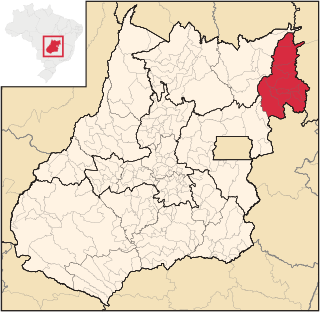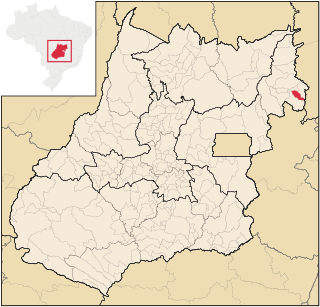
Literacy in its broadest sense describes "particular ways of thinking about and doing reading and writing" with the purpose of understanding or expressing thoughts or ideas in written form in some specific context of use. In other words, humans in literate societies have sets of practices for producing and consuming writing, and they also have beliefs about these practices. Reading, in this view, is always reading something for some purpose; writing is always writing something for someone for some particular ends. Beliefs about reading and writing and its value for society and for the individual always influence the ways literacy is taught, learned, and practiced over the lifespan.
Standard of living is the level of income, comforts and services available, generally applied to a society or location, rather than to an individual. Standard of living is relevant because it is considered to contribute to an individual's quality of life. Standard of living is generally concerned with objective metrics outside an individual's personal control, such as economic, societal, political and environmental matters – such things that an individual might consider when evaluating where to live in the world, or when assessing the success of economic policy.
The Physical Quality of Life Index (PQLI) is an attempt to measure the quality of life or well-being of a country. The value is the average of three statistics: basic literacy rate, infant mortality, and life expectancy at age one, all equally weighted on a 0 to 100 scale.

The Human Development Index (HDI) is a statistic composite index of life expectancy, education, and per capita income indicators, which are used to rank countries into four tiers of human development. A country scores a higher level of HDI when the lifespan is higher, the education level is higher, and the gross national income GNI (PPP) per capita is higher. It was developed by Pakistani economist Mahbub ul Haq and was further used to measure a country's development by the United Nations Development Programme (UNDP)'s Human Development Report Office.

Development geography is a branch of geography which refers to the standard of living and its quality of life of its human inhabitants. In this context, development is a process of change that affects peoples' lives. It may involve an improvement in the quality of life as perceived by the people undergoing change. However, development is not always a positive process. Gunder Frank commented on the global economic forces that lead to the development of underdevelopment. This is covered in his dependency theory.
Gross Enrolment Ratio (GER) or Gross Enrolment Index (GEI) is a statistical measure used in the education sector, and formerly by the UN in its Education Index, to determine the number of students enrolled in school at several different grade levels, and use it to show the ratio of the number of students who live in that country to those who qualify for the particular grade level. The United Nations Educational, Scientific and Cultural Organization (UNESCO), describes "Gross Enrolment Ratio" as the total enrolment within a country "in a specific level of education, regardless of age, expressed as a percentage of the population in the official age group corresponding to this level of education".
Whipple's index, invented by American demographer George Chandler Whipple (1866–1924), is a method to measure the tendency for individuals to inaccurately report their actual age or date of birth. Respondents to a census or other survey sometimes report their age or date of birth as a round number, or to be more culturally favorable, for example, so that they appear younger or to have been born on a date considered luckier than their actual date of birth. The process of reporting a rounded or “lucky” age is known as age-heaping.

The Vão do Paranã is a statistical micro-region created by IBGE in northeastern Goiás state, Brazil.

Damianópolis is a municipality in eastern Goiás state, Brazil. The population was 3,597 (2007) in a total area of 415.3 km2.
The Human Poverty Index (HPI) was an indication of the poverty of community in a country, developed by the United Nations to complement the Human Development Index (HDI) and was first reported as part of the Human Deprivation Report in 1997. It was considered to better reflect the extent of deprivation in deprived countries compared to the HDI. In 2010, it was supplanted by the UN's Multidimensional Poverty Index.
Happy life expectancy (HLE) is calculated by multiplying life expectancy by a happiness index. The first uses life expectancy at birth. The happiness index is the average appreciation of life from the world databases of happiness.
The Gender Development Index (GDI) is an index designed to measure gender equality.
Education For All (EFA) is a global movement led by UNESCO, aiming to meet the learning needs of all children, youth and adults by 2015. Education for All, is also a USA based 501 (c)(3) organization that strives to provide free education to disadvantaged underprivileged rural children, completely in line with UNESCO initiative.
Gender inequality in India refers to the health, education, economic and political inequalities between men and women in India. Various international gender inequality indices rank India differently on each of these factors, as well as on a composite basis, and these indices are controversial.

An Education index is a component of the Human Development Index published every year by the United Nations Development Programme. Alongside the Economical indicators and Life Expectancy Index, it helps measure the educational attainment, GNI (PPP) per capita and life expectancy are also used with the education index to get the HDI of each country.

The following are international rankings of Cuba.
Education is something that takes place in the Arab World where there is a tradition for learning and prospering academically. UNESCO sources agree that the average rate of adult literacy is 76.9%. Each of the Arab-majority states are members of the Arab League.
The Fordham Francis Index is a multidimensional measure of international poverty. It is a simple tool that relies on seven primary indicators which are categorized into a Material Well-being Index and a Spiritual Well-being Index. It was launched on September 23, 2016 at a Fordham conference entitled Pope Francis' Call for Escaping Poverty co-sponsored by the Vatican Foundation Centesimus Annus Pro Pontifice. The research was conducted by students from Fordham's Graduate Program in International Political Economy and Development(IPED), under the research direction of Dr. Henry Schwalbenberg. The Fordham Francis Index is a response to the Pope's Address to the United Nations in New York last September 25, 2015.







